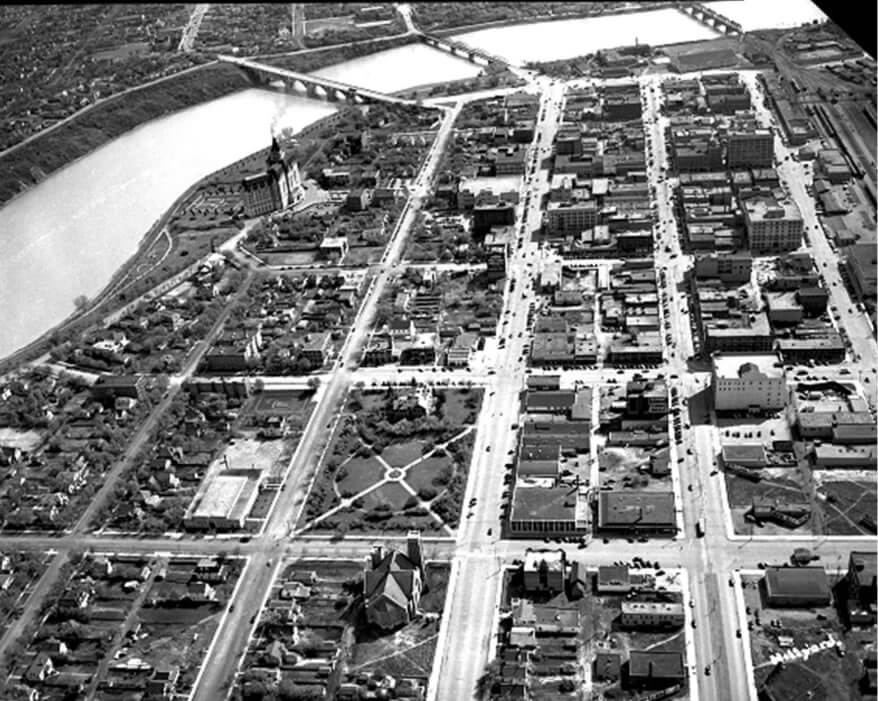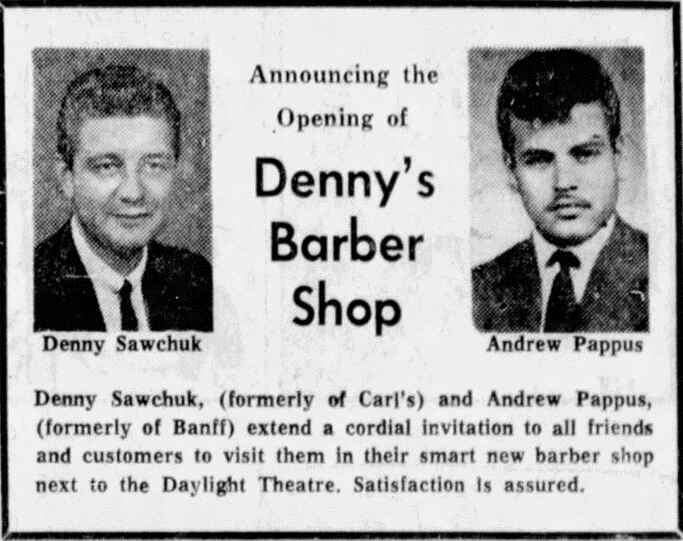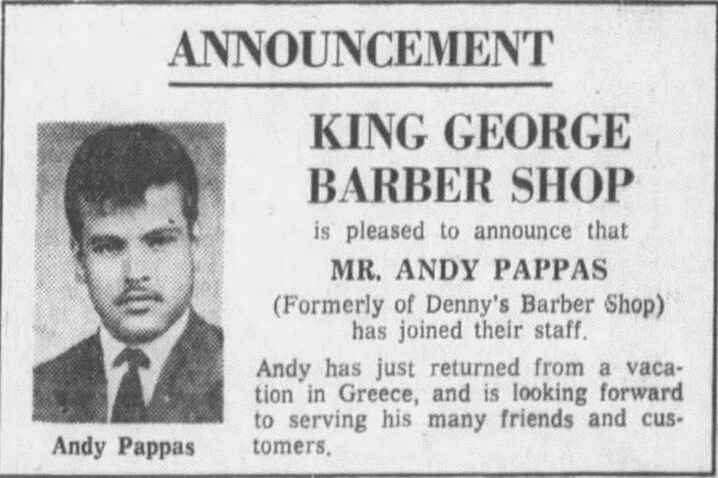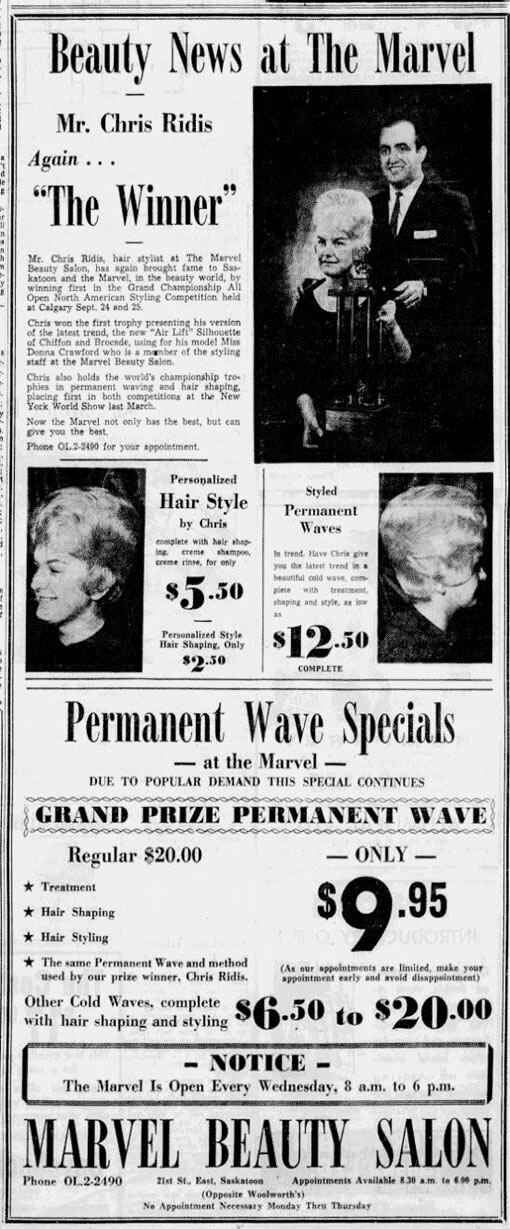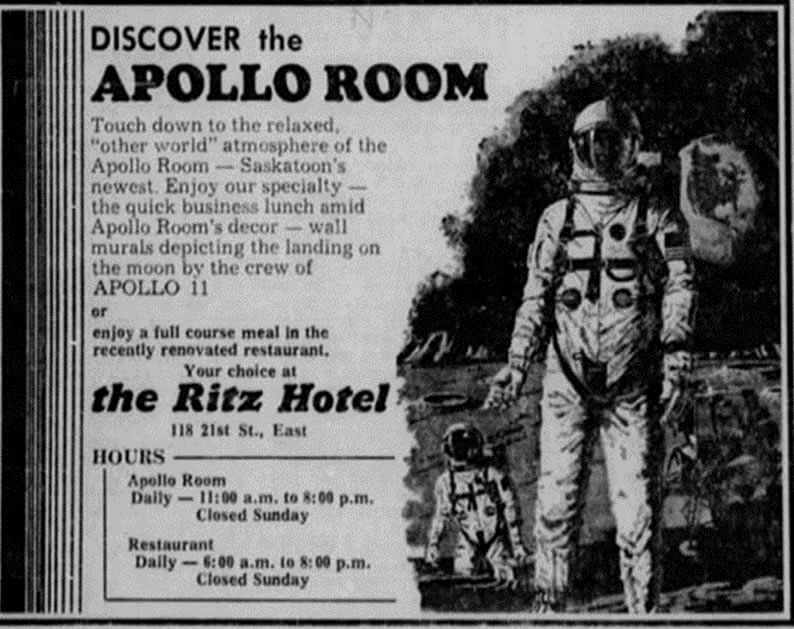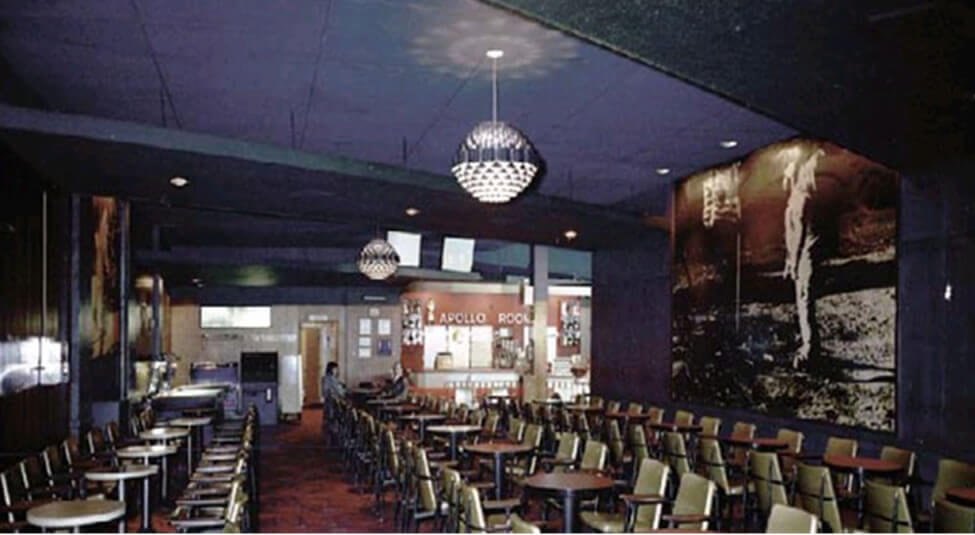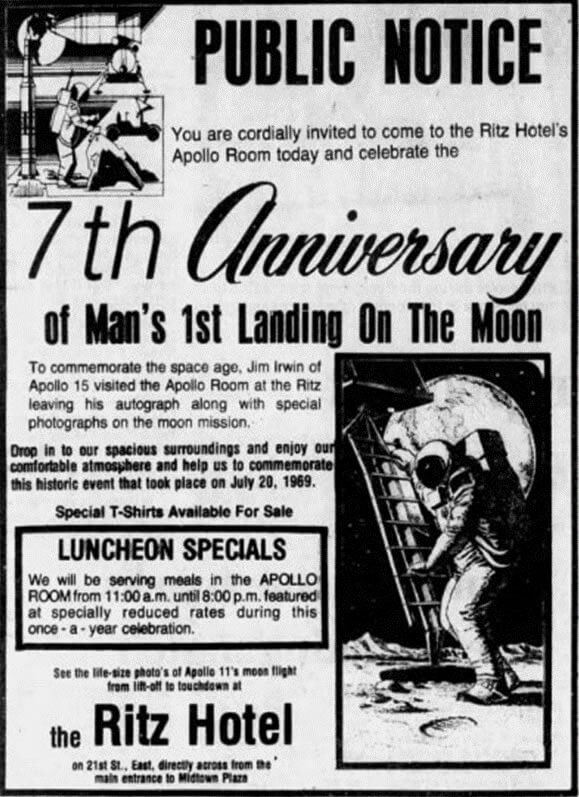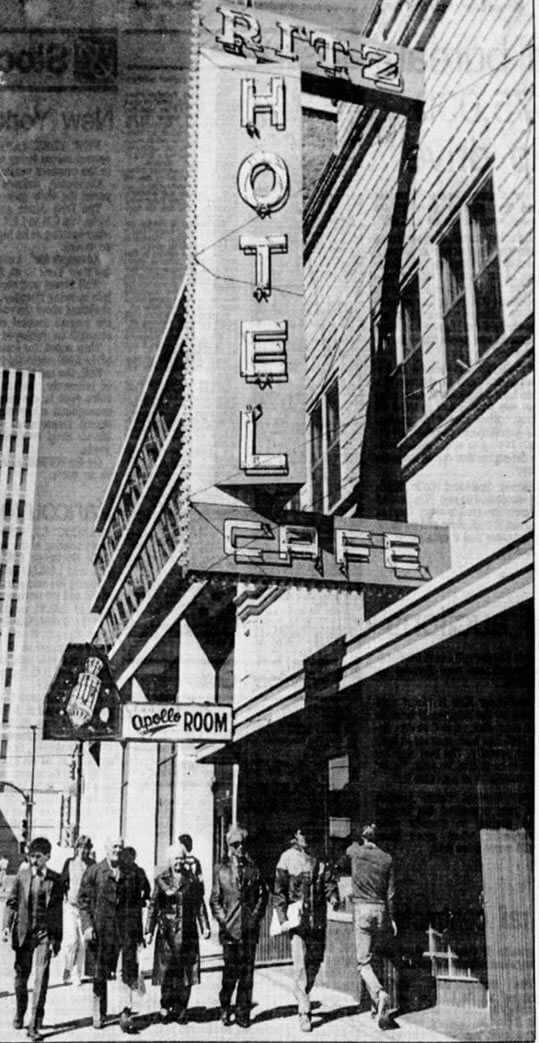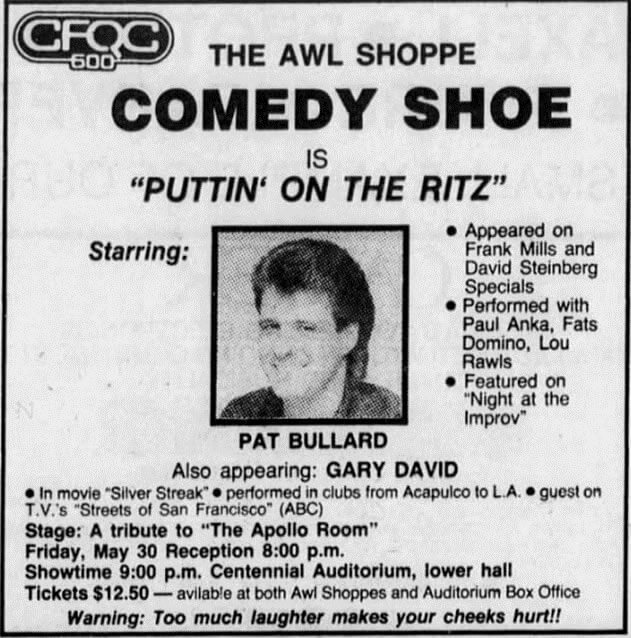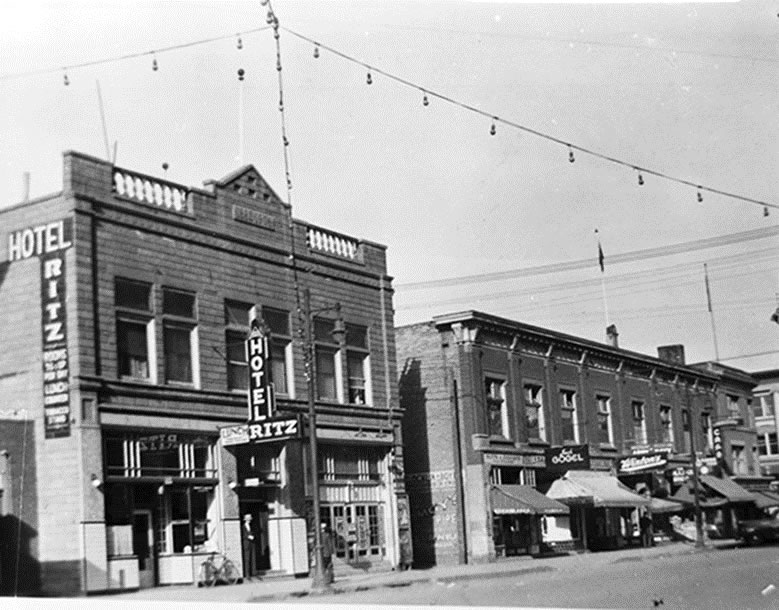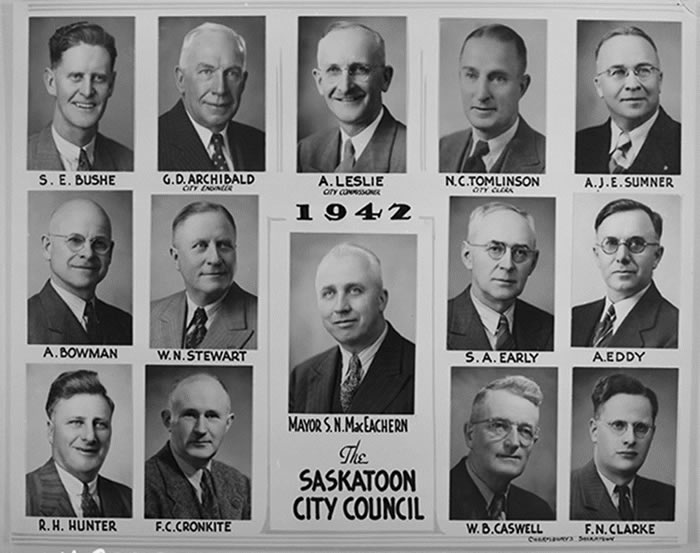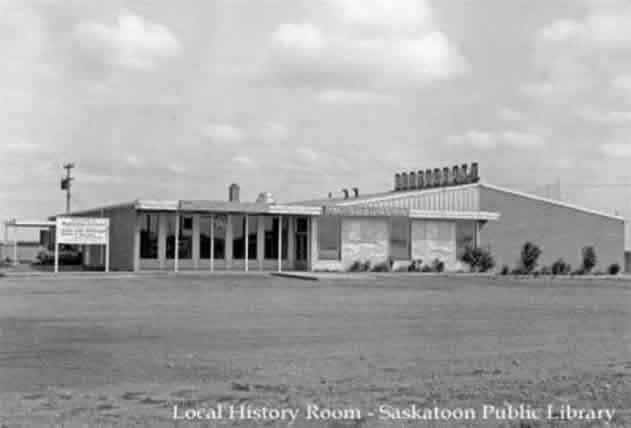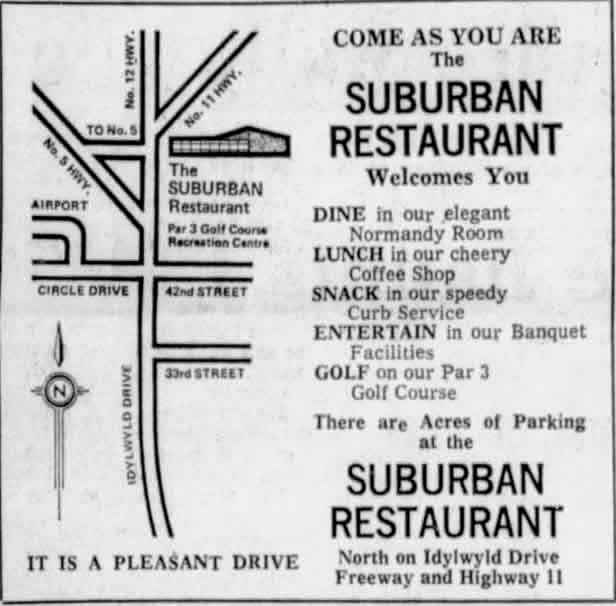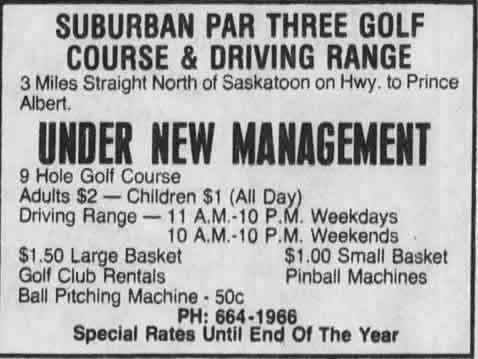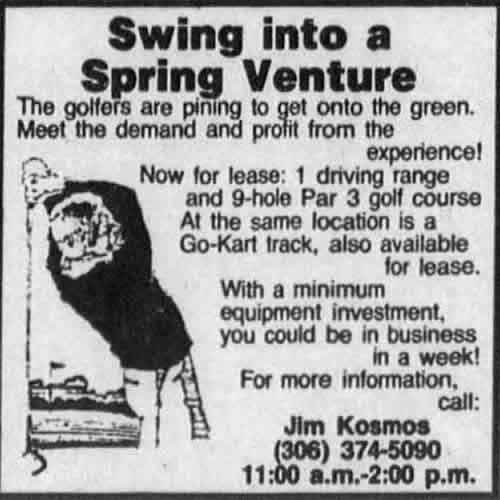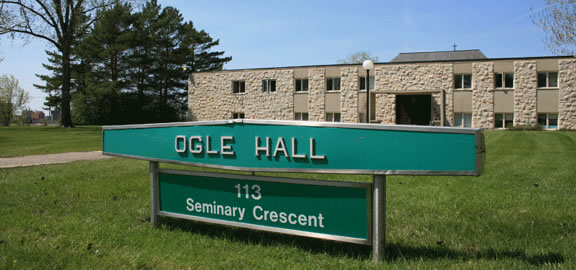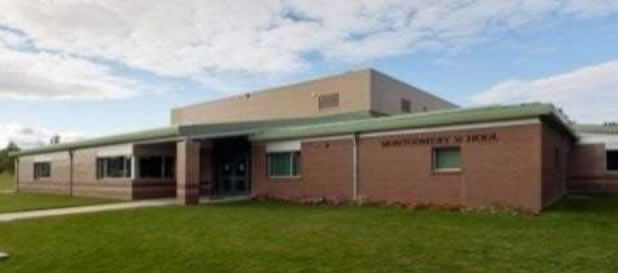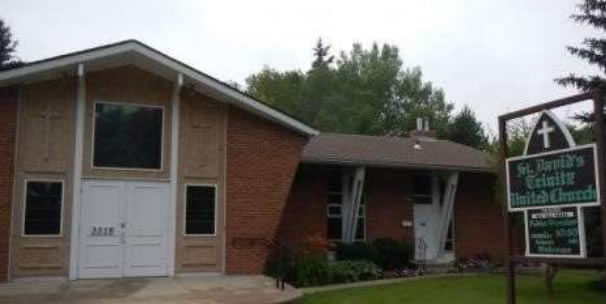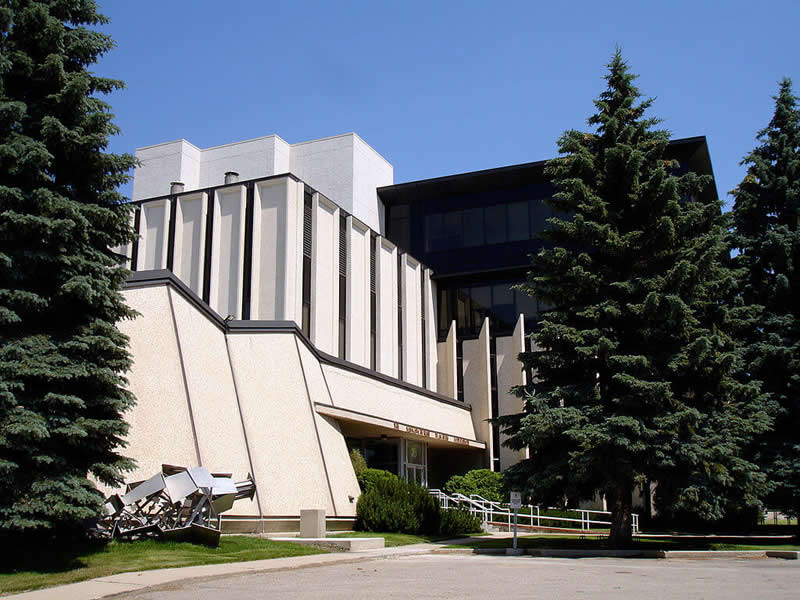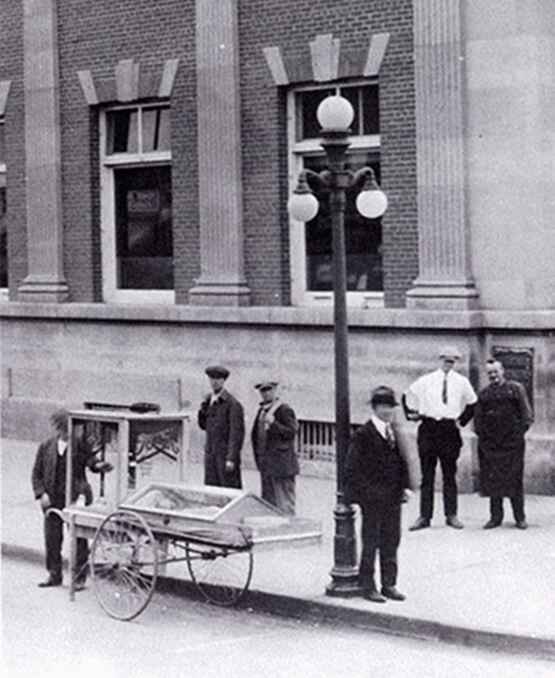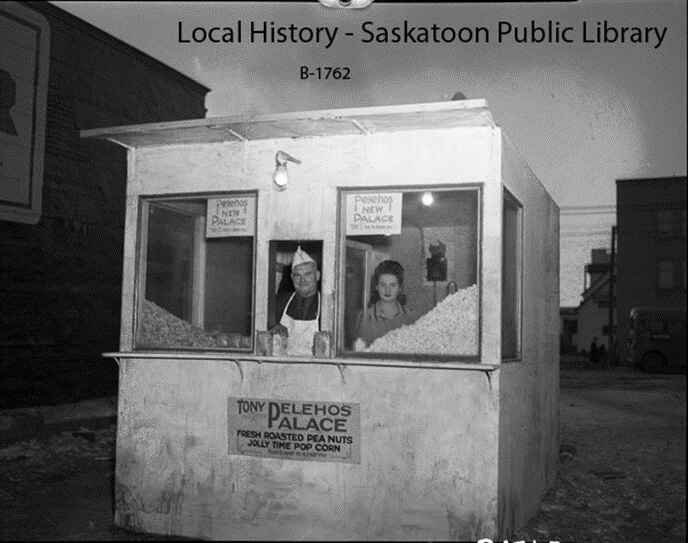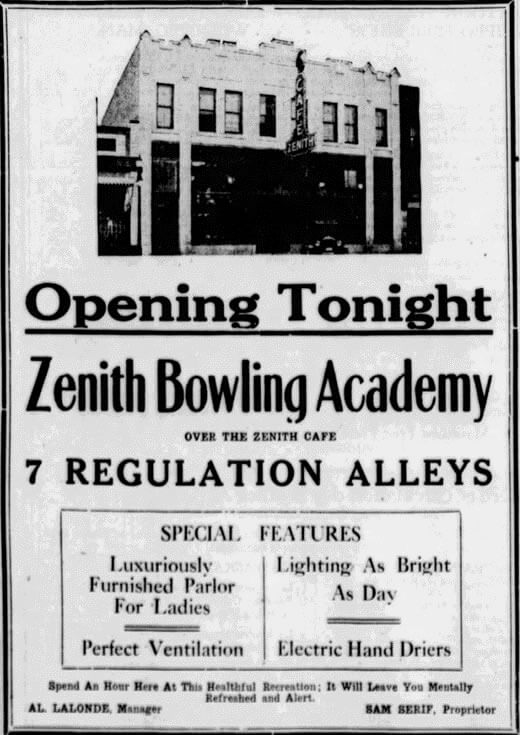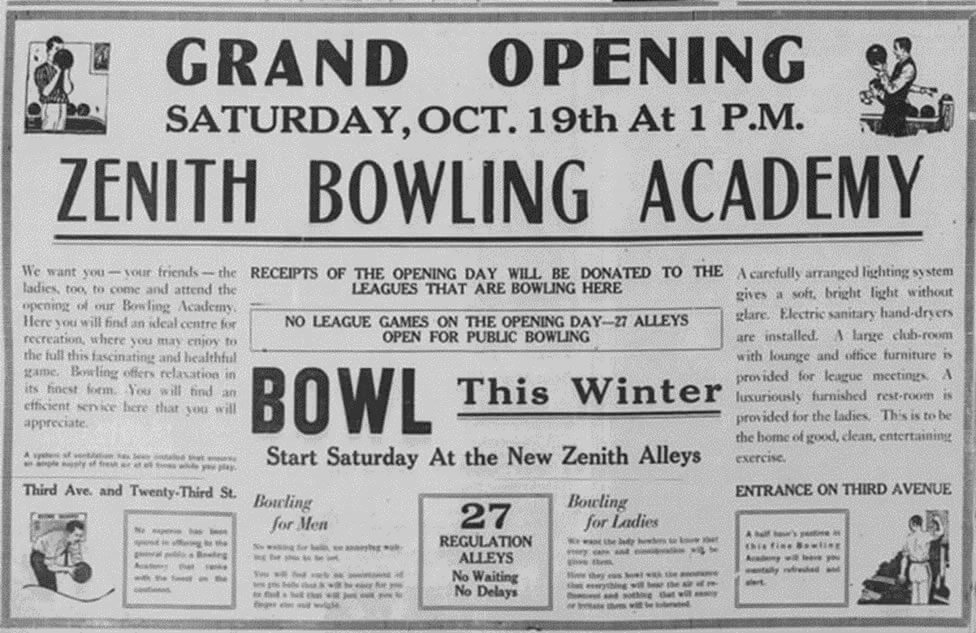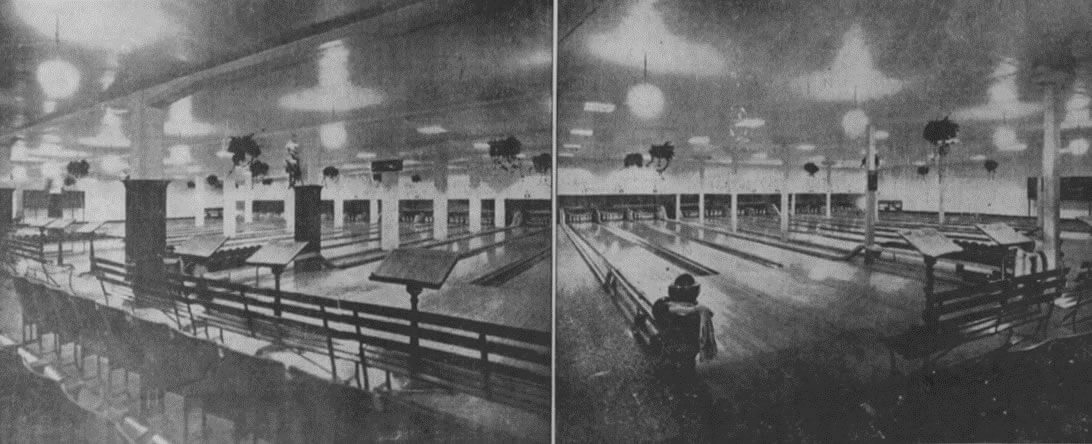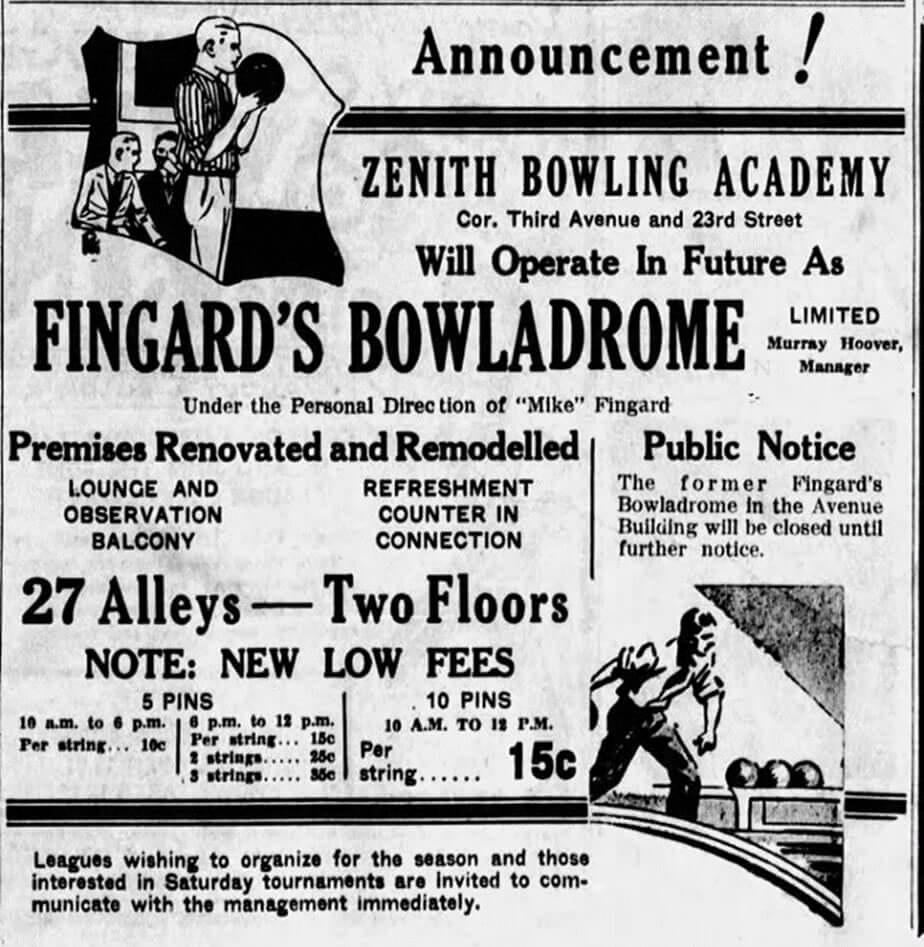Commerce
Saskatoon’s History Through the Lives and Experiencs of its Greek Community
Aerial view of downtown Saskatoon (ca 1948)
Source: Saskatoon Public Library, Local History Room (B-270)
The story of the businesses of Saskatoon’s early Greek immigrants is more than just the story of restaurants, hotels, and other endeavours. It is the story of families – both immediate and extended. Even though they were competitors, the families that owned and operated these businesses also looked out for each other. Often, there were family connections, through grandparents or through marriage. They also shared a common Greek heritage and immigrant experience in a new land.
This section tells the stories of the businesses that were owned and/or operated in the past by Greek families in Saskatoon. Most of the businesses in this section no longer exist, but there are some which continue the legacy of the founding families but no longer have have Greek ownership or operating connections.
We invite comments, additional information, and corrections to these posts in this section. Please send them to the following email address: sktngreekhistory@gmail.com .
Table of Contents
- A.Four Nightclub/New Shasta Cafe
- Andy’s Barber Shop
- Coiffures by Chris
- Ritz Beer Parlour, Ritz Beverage Room, & Apollo Room
- Ritz Social Club
- Suburban Golf & Recreation Centre
- Tinos Kortes Registered Architect
- Tony’s Popcorn Stand
- Zenith Bowling Academy
- Confectioneries, Cafes, and Restaurants
- Memories
A.Four Nightclub/New Shasta Cafe
213 Second Avenue South
Owners/Operators: John, Chris, Dave, and Steve Arvanitis (1972 – 1985)
The Arvanitis brothers (John, Chris, Dave, and Steve) bought the D.C. Building at 213 Second Avenue South and renovated the Shasta Café on the main floor. They then operated the club, beginning on New Year’s Eve in 1972, as The New Shasta Club. Initially, it was a dining room with live entertainment. In 1973, the club changed its name to the A.Four (representing the four brothers, Arvanitis Four). The brothers operated at the Second Avenue location until 1985.

Saskatoon Star-Phoenix, March 8, 1973, p. 7.
Under the Arvanitis ownership, many well-known performers played at the A.Four. The Star-Phoenix highlighted some of these performers in a 1985 article:
“The club introduced Canadian stars like Downchild Blues Band, Ken Tobias, the late Jim Leroy, Gary and Dave, Edward Bear, Ray Hutchinson, Charity Brown, Lady, Streetheart, Terry Crawford, Toronto, Doug and the Slug, Bryan Adams, and many others. The club was among the first in Saskatoon to use Elvis Presley impersonators. And, it also provided a stage for established club acts like Gary Lewis and the Playboys, Vic Dana, The Four Lads, Sidro’s Armada, Patti James, Bobby Curtola, The Platters, The Dublin Corporation, and Ian Tyson” (Saskatoon Star-Phoenix, January 18, 1985, p. 13).

Saskatoon Star-Phoenix, July 30, 1975, p. 21

Saskatoon Star-Phoenix, August 29, 1975, p. 22.

Editorial Note: “Brian” should be “Bryan”
Saskatoon Star-Phoenix, October 16, 1981, p. 16.
The nightclub, as a business, was sold to the Kinlock brothers in 1985; ownership of the D. C. Building remained with the Arvanitis brothers. The name of the new club was El Mocambo. The Arvanitis family opened a new restaurant, The Station Place, on Idylwyld Drive (Saskatoon Star-Pheonix, January 18, 1985, p. 13).
In an article in the August 17, 1988, Saskatoon Star-Phoenix, columnist Ned Powers described the business challenges of operating a nightclub:
“The nightclub business is a high-risk venture. Some, who have tried their luck, failed because they didn’t own their building, didn’t have the time to build up a credible name and reputation or didn’t have enough money to survive short-term setbacks. Clubs often suffer through frequent name changes and, too often, clientele have never known the clubs would still be there when they went back a week later” (Saskatoon Star-Phoenix, August 17, 1988, p. 31),
Powers’ comments were in response to the demise of the El Macambo Nightclub and the subsequent decision by the Arvanitis brothers to reopen the club in 1988 (while continuing to also operate the Station Place Restaurant). The engaged additional partners, Bill Kolter (a Saskatoon-based performer and booking agent) and Larry Yaworski (who previously was employed at the Capri) to operate the re-opened A. Four Nightclub at its original location on Second Avenue South Yaworski served as the club’s manager. However, this version of the A-Four did not survive the market and in 1989 was replaced by another club, The Cabaret Club, at the same location (Saskatoon Star-Phoenix, November 16, 1989, p, 27).

Saskatoon Star-Phoenix, August 25, 1988, p. 23.
Researched by Ken Pontikes, November 25, 2024.
Sources: Saskatoon Star-Phoenix, various editions; Saskatoon Public Library, Local History Room.
A Tribute to the A.Four
Photo Source: CTV News Saskatoon
Steve Arvanitis has been a first-hand witness to the growth of Canadian rock and roll.
Arvanitis and his three brothers, David, John, and Chris, sold the ownership of the A.Four nightclub to Ken Kinlock a week ago and the club, long a bastion of high-energy rock and roll, will be transformed into a new setting called El Mocambo.
The A.Four operated for 17 years but it wasn’t until 1976 that Arvanitis realized that rock and roll would be the ticket to survival.
And he can cherish the memories of introducing acts like Streetheart, Charity Brown, Bryan Adams, Doug and the Slugs, Toronto, Edward Bear, Jerry Doucette, Queen City Kids, and Jenson Interceptor to Saskatoon audiences.
“Often, I signed acts based on listening to a record or taking the agent’s word that they were good or talking with Saskatoon disc jockeys,” recalled Arvanitis. “There were always risks involved but most of the acts that came to us were always good for return business and some of them became headliners at the Centennial Auditorium.”
The A.Four indeed became a playground for some of Canada’s ready-to-break stars.
“Kenny Shields was always a favorite. I don’t remember how many times they played our club but they always did a job for us. Last time around, we paid them $7,500 for the week and we knew they were getting too big for us and would go into the concert halls,” says Arvanitis.
“Paul Dean was part of the Streetheart gang, too, and even when he became a big star with Loverboy, he came back to the club. One night after they played a doubleheader at the Auditorium, Paul and the boys came over to the club. We made them feel at home and before long, they went on stage and worked for an hour and a half”.
Musicians occasionally came back for impromptu sessions at the club. One night three years ago, Iron Maiden, the heavy metal rock band, cancelled a Saskatoon Arena date when their drummer took sick. Since they had the night off in Saskatoon, a couple of the Iron Maiden players went wandering into the A.Four and worked two sets with some Canadian friends they knew.
Arvanitis fondly remembers introducing Bryan Adams to the Saskatoon market. “I think he came to us on four different occasions, sometimes for less than a week. On his last visit, he said he was giving up nightclubs. He knew his time for the concert halls had come and we knew it, too.”
Arvanitis recalls how “the crowds were lined up around the corner right back to the Canada Building the last time Toronto played” and how Sheron Alton, a guitarist with Toronto, had played the A. Four three years earlier as a member of an all-girl, all-Canadian band called Lady.
Consistent performers, too, were four youngsters from Regina who started out as Cambridge and eventually changed their name to Queen City Kids. The band split up two years ago after 12 years together, an impressive streak of longevity.
Highest paid a Canadian rock act? At the A.Four, the honors went to Jerry Doucette who, at a peak in his career, commanded $2,000 a night for four nights.
Highest on-week price Arvanitis ever paid was to Allan, who drew $12,000 for a week’s work at a time when he was considered the premiere impersonator of the late Elvis Presley.
Rock and roll wasn’t always on the menu at the A.Four, which hoped to develop a supper club atmosphere when it opened . . . . In its earlier years, the club had established acts like Patti James, Sidro’s Armada, Bobby Curtola, Bobby Vee, Vic Dana, Gary Lewis and the Playboys, Gary and Dave, The Ink Spots, The Platters and helped to develop Saskatoon followings for Joey Silva and Sherry Crawford, Sensation, Robbie Rae and others.
“In the early days, it was always a problem of knowing what the public really wanted. Once we settled into rock and roll, things got better because the young people knew what they would get and the booking agents knew what we really wanted,” said Arvanitis.
Source: Ned Powers, “Rockin’ days of A.Four bring fond memories”, Saskatoon Star-Phoenix, January 24, 1985, p. 17.
Andy’s Barber Shop
Midtown Plaza
Owner: Andy Pappas (Papageorgkopoulos)
Andy Pappas was born in Amaliada, Greece. He emigrated to Canada in 1959, living first in Moose Jaw where he worked as a dishwasher in a restaurant. He also spent time in Banff.
In 1960, he moved to Saskatoon where he was employed as a barber, while also working at various restaurants. Andy recalled his life during those years in a newspaper article about him, “I’d work all day cutting hair, then go to work in the restaurant at 5 p.m., putting in 16 hours a day while I learned the language” (Saskatoon Star-Phoenix, April 5, 1977, p. 13).
Saskatoon Star-Phoenix, July 28, 1962, p. 17.
Saskatoon Star-Phoenix, August 26, 1967, p. 26
In 1970, he established his barber shop, Andy’s Barber Shop in Midtown Plaza.
Saskatoon Star-Phoenix, August 15, 1970, p. 24.
In 1974, he changed careers and operated the Venice House Restaurant (Eighth Street East), the Crate Restaurant (Idylwyld Drive and Thirty-third Street), and Venice House (Twenty-second Street).
Coiffures by Chris
Several Locations (1963 – 1980)
Owner/Operator: Chris Ridis
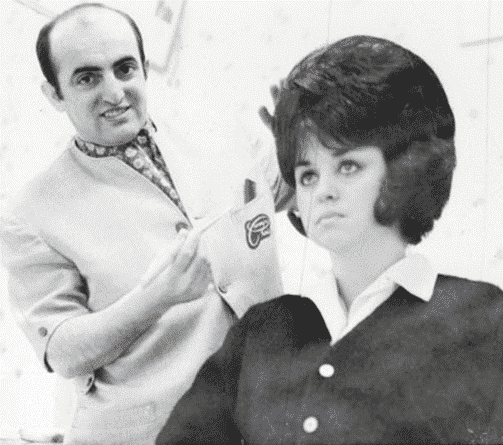
Chris Ridis styling the hair of a customer (ca 1966)
Source: Saskatoon Public Library, Local History (QC-3902-9)
Chris Ridis learned to be a hairstylist in Athens. He continued his studies in several European cities, including Rome, Vienna, and Paris. When he came to Saskatoon in 1956, he continued his trade at The Marvel Beauty Salon on Twenty-first Street East. He subsequently received further training in New York, Hollywood, San Francisco, Chicago, and Los Angeles.
In the 1950s and 1960s, Chris was the most well-known hair stylist in Saskatoon. He travelled frequently to Europe to learn the latest hairstyles for women. He won numerous international and national competitions, for which the trophies were prominently displayed in his advertising and his salons. He described his participation in international hairdressing competitions as influential to his approach to his profession and to keeping abreast of new styles and trends:
“In these competitions, teams from every country compete to invent a new idea and an individual style. Individuality is very important to European women, and their hairdressers work to find a style that is adapted to their personality and lifestyle . . . . In designing a hairstyle, [the hairdresser takes] the woman into account and [styles] her hair especially for her . . . . “ (Saskatoon Star-Phoenix, October 13, 1972, p. 36).
He suggested that while European women are more confident in taking the advice of their hair stylists, Canadian women prefer to have a hairdresser who “styles [their] hair the way [they] like it” and therefore are not willing to adopt current fashion styles. Canadians are “not backward or behind, just a little slower in accepting the new European ideas” (Saskatoon Star-Phoenix, October 13, 1972, p. 36).
Chris described his approach to hair styling as “a matter of making a diagnosis to make the customer feel good”. He added that “by talking to a customer, [the hairdresser obtains] insight into her personality which helps [the hairdresser] to create a style to suit her” (Saskatoon Star-Phoenix, September 25, 1969, p. 7).
Marvel Beauty Salon celebrates Chris Ridis’ first-place achievement in the Grand Championship All Open North American Styling Competition
Source: Saskatoon Star-Phoenix, October 21, 1961, p. 9.
As a hairstylist for women, Chris entered the market at a time when few salons in western Canada had male stylists. When asked about his interest in this profession, Chris replied: “A man becomes involved in hair styling with two main objectives. He wants to be outstanding in his profession and he wants to own his own beauty salon” (Saskatoon Star-Phoenix, September 25, 1969, p. 7).
In 1963, Chris opened his own beauty salon – Coiffures by Chris –located on the ground floor retail space within the KG Parkade on 23rd Street between First and Second Avenues (105 Twenty-third Street East). The salon was described as “the ultimate in comfort and convenience”, including “little luxuries” such as access to telephones in each styling booth (Saskatoon Star-Phoenix, October 20, 1962, p. 12). At the time it opened, the salon had a staff of 21 professional hair stylists, as well as a cosmetic expert.
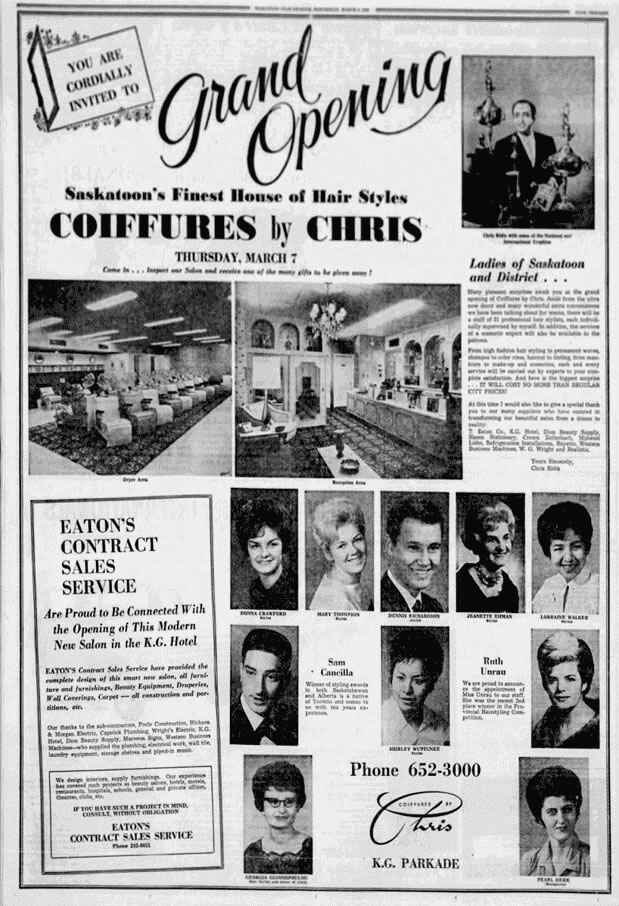
Saskatoon Star-Phoenix, March 6, 1963, p. 13.
Initially, the hairstylists in Chris’ salon were employees of his business. However, by August of 1964, their status had been changed to independent operators — “our hair stylists are now working with us, rather than for us” (Saskatoon Star-Phoenix, August 1, 1964, p. 8). Hairstylist initially rented chairs in the salon for $15.00 per week or 20% of gross earnings (Saskatoon Star-Phoenix, October 31, 1964, p.25).
In 1966, Chris added a second location to his business. Coiffures by Chris was now operating at the KG Parkade and in the Sheraton-Cavalier Hotel. The new salon was managed by Chris’ sister, Georgina Giannopoulou.
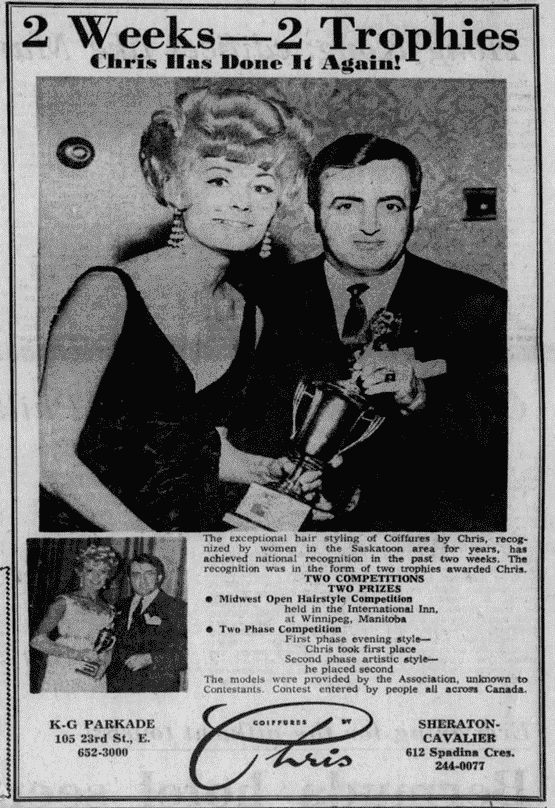
Saskatoon Star-Phoenix, October 11, 1969, p. 16.
By 1970, Chris had closed his salons in the KG Parkade and the Sheraton Cavalier Hotel and established a new salon in Midtown Plaza. Coiffures by Chris was among the first tenants in this downtown mall when it officially opened in July 1970. It was located on the southwest corner of the building, next to Andy’s (Andy Pappas) Barber Shop.
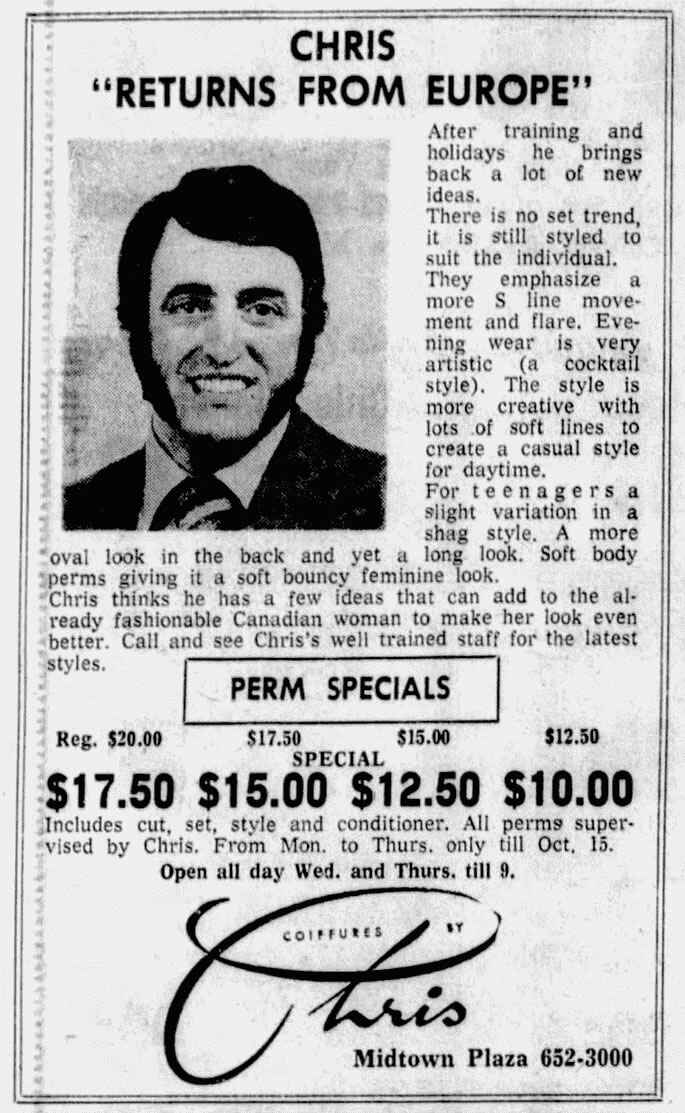
Saskatoon Star-Phoenix, September 16, 1972, p. 16.
In 1977, he opened a second salon at 2729 Eighth Street East, behind the Cave Restaurant. However, he sold the Eighth Street salon in 1979 and continued to operate the Midtown Plaza salon until 1980, when his leased expired. He then returned work at the Eighth Street location, as part of the Arlington Glamour Centre.
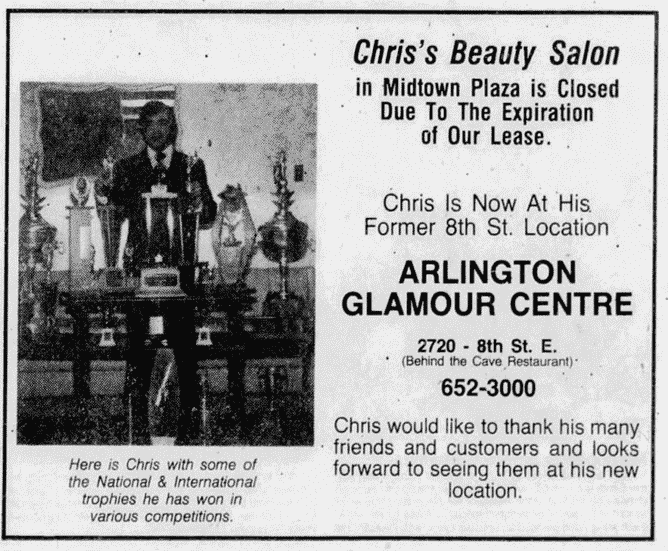
Saskatoon Star-Phoenix, August 9, 1980, p. 32.
He subsequently decided to enter the restaurant industry. At various times, he was associated with Lido’s Restaurant (250 Idylwyld Drive North) Crossroads Family Restaurant, and Chris’ Family Restaurant (120 Idywyld Drive North)). He returned to hairstyling in 1998 by renting a chair at Marcy’s Place of Beauty.
Researched and written by Ken Pontikes, August 15, 2024
Sources: Saskatoon Star-Phoenix, various editions; Saskatoon Henderson Directory, various editions; Saskatoon Public Library, Local History.
Ritz Beer Parlour, Ritz Beverage Room, and the Apollo Room
118 – 21st Street East (Ritz Hotel)
Owner/operator: The Geatros Family
Following a province-wide plebiscite, the Saskatchewan Legislature passed legislation in 1935 which provided a limited number of licenses, based on population, to hotels to operate by-the-glass beer parlours. The operations were highly regulated. The Ritz Hotel, operated by the Geatros family, was among the first beer parlours licensed in Saskatoon.
The Ritz beer parlour was initially a men-only facility. In 1960, renovations were undertaken to expand and convert the facility into a license beverage room that sold more varieties of alcohol and that could accommodate a section for “women and escorts”.
In 1970, the beverage room was redecorated with a space theme featuring large mural photographs of the Apollo 15 landing on the moon. According to Diane Stratas (daughter of the William and Effie Geatros) the development of the theme was a family effort: “My sister Mary chose the name Apollo, and my other sister Helen designed the décor.”
The Apollo Room opened at a time when the city’s “bar scene” was changing. According to a long-time customer, the Bessborough Hotel began enforcing stricter dress requirements. Many of the younger drinkers were offended when they were not served because of their appearance and attire; they responded by moving their business to the Ritz. The Apollo Room attracted a diverse clientele – including working-class residents, university students, and members of the city’s gay and lesbian community. The Star-Phoenix described the Apollo Room as the “home of the 21-cent draft and juke box music ranging from country favourites like You’re the Reason my Children are Ugly, to traditional Greek tunes”.
Interior of the Apollo Room (1974)
Source: Saskatoon Public Library, Local History Room (CP-6910-1)
The Apollo room used its outer space theme to promote the business. According to Diane Stratas, “Every July 20, we’d give out souvenirs to celebrate the first time man walked on the moon”. One of the murals was later autographed by astronaut Jim Irwin who walked on the moon during the Apollo 15 mission.
Exterior of the Ritz Hotel, with the sign to the left for the Apollo Room
Source: Saskatoon Star-Phoenix, April 24, 1985, D11
The Ritz Hotel, Café, and Apollo Room closed in 1985, following the death of Effie Geatros. The building was purchased by the Royal Bank of Canada and demolished in 1987.
In 1985, a group former customers purchased several items from the Apollo Room – such as the wall murals, signs tables, chairs, and carpet. The purchasers were the original sponsors of an annual comedy show (“Comedy Shoe”). In 1986, the comedy show’s theme was “Puttin’ on the Ritz”, a cabaret-style tribute to the beverage room. Also, “reunion” events of the Apollo Room’s customers were held in 1987, 1993, and 1994.
Source: Saskatoon Start-Phoenix, May 28, 1986, p. C6.
Researched by Ken Pontikes, December 11, 2021
Sources: Valerie J. Korinek, Prairie Fairies: A History of Queer Communities and People in Western Canada, 1930 – 1985 (Toronto: University of Toronto Press, 2018), p. 162 and Saskatoon Star-Phoenix, April 24, 1985, p. D11; and July 24, 1987, p. B5.
Ritz Social Club (1936 – 1942)
118 Twenty-first Street East (Ritz Hotel)
Owners/Operators: William Geatros, Peter Pontikes
The Ritz (Saskatoon) Club was one of the seven commercial poker clubs, also known as social clubs and poker resorts, operating in Saskatoon in 1942. At that time, social clubs were gambling establishments that provided facilities to play card games. They were incorporated under provincial legislation and licensed under municipal bylaws. Even though they identified as membership organizations, social clubs operated like privately owned businesses. Membership conferred no special benefits on the card players and dues were rarely collected. While these poker clubs operated in the basements of hotels or in the backrooms of pool halls, cafes, or other businesses, they were not clandestine establishments. The city’s Henderson Directory identified most of them.
The Ritz Club, located in the basement of the Ritz Hotel at 118 Twenty-first Street East, traced its origins back to 1912 when that space was leased for a pool hall known as the Saratoga Club. Around 1934, the Saratoga Club closed and then was reopened, on or about 1936, by the owners of the Ritz Hotel, under the Ritz Club name.
Ritz Hotel: the Ritz Social Club was located in the basement and was accessible from the door at the rear of the building.
Photo source: Saskatoon Public Library, Local History Room (LH-6020)
In 1942, the Ritz Club had two rooms, with a combined area of 1,977 square feet (183.67 square meters). A sign at the front of the building directed players to enter the Club through a rear door, off the adjacent alley. Peter Kyriakos Pontikes, an employee of the Ritz Hotel, was responsible for operating the Ritz Club. His duties included selling sandwiches, tobacco products, candies, and replacement decks of cards to the players. He also collected a “rake-off” (which was illegal under The Criminal Code) from the wagering pool (the “pot”) contributed by players during the games.
The Code prohibited the keeper of a house from receiving any direct benefits or indirect benefits, such as promoting sales of other products or services. Players could purchase and pay for refreshments, food, and other products consumed in the club, but indirect payments for these products or operating costs (such as electricity and rent) through rake-offs were not permitted. This requirement made it difficult for commercial card-playing establishments to financially survive. The Criminal Code was further amended in 1938 to clarify that a facility was a “bona fide social club” when the rake-off fee was less than 10 cents an hour or 50 cents a day. This amendment established a legally acceptable rake-off which could be used to finance the club’s operating expenses. In theory, this was a major concession by the federal government to the clubs’ owners, but in practice, it was not sufficient to guarantee the club’s financial viability.
Municipal licensing provided the City of Saskatoon with a tool to control the number, location, and operations of social clubs within the city limits. In 1934, the City Council directed the police chief, licensing inspector, and city solicitor to investigate and report on these social clubs’ operations. Their subsequent administrative report did not identify any operational irregularities. Police Chief Donald reiterated these conclusions in a February 1935 letter to the City Council: “. . . I have nothing to say against how the licensees have conducted their premises, they being at all times orderly, no sign of any liquor therein, and to all appearances well managed”. However, Donald did not let up on expressing, publicly, his personal views about the ethics, morality, and social consequences of the social clubs and therefore, his desire to have all existing licenses terminated. He described the clubs as “derogatory to the life of our city” and “making young men into gamblers.”
In 1941, moral arguments against social clubs intensified among members of the City Council. The eight licenses for 1941 were approved, after a “vigorous” debate (according to the Star-Phoenix), by a 5-3 vote. The primary arguments against social clubs had shifted from the immorality of gambling to protecting vulnerable and inexperienced players and their families from financial ruin.
Saskatoon City Council, 1942
Photo Source: Saskatoon Public Library (LH-9223)
Saskatoon’s seven commercial poker clubs, including the Ritz Club, were in full operation on the last day of March 1942. The card players – all men because women were prohibited from playing — were settling in for an evening of card games that often continued into the early morning hours. Stud poker was the favoured game; however, rummy and bridge were occasionally played. After several weeks of observation and investigation, police raided all seven licensed clubs on March 31, 1942. The clubs were subsequently convicted, under the Criminal Code of Canada, of taking excessive rake-offs.
This police raid was the beginning of the end for commercial poker clubs in Saskatoon. Previous raids on social clubs involved the mass and summary conviction of men directly involved in poker games played in these establishments. This time, the seven clubs were individually charged as incorporated entities for taking excessive rake-offs from the poker games.
Two and a half weeks after the raid, the seven clubs pleaded guilty to the charges of operating common gaming houses and paid fines of $50 each. However, they described their guilty pleas as protesting an unreasonable law and not an admission that they had done anything morally or ethically wrong.
A special committee of Saskatoon City Council began deliberating on May 13, 1942, on proposed amendments to the license bylaw that would apply to social clubs. The views of members of the City Council were beginning to polarize between those wanting the social clubs banned from Saskatoon and those wanting more stringent regulations with the market determining, within these regulations, which ones would survive.
The granting of licenses for social clubs remained unresolved until late July 1942. Three social clubs – the Elite Bridge and Recreation Club, the Frontenac Club, and the St. Charles Club – withdrew their applications. On August 17, 1942, the Council rejected the remaining applications from the Commercial, Madison, Ritz, and Windsor Clubs. In March 1943, the provincial government revoked the incorporation certificates for the Commercial, Elite, Frontenac, Madison, Ritz, St. Charles, and Windsor Clubs. Saskatoon’s seven commercial social clubs shut down and no other clubs of this type have operated subsequently in this city.
Source: Adapted from Ken Peter Pontikes, “Social Gambling and the Demise of Saskatoon’s Social Clubs”, Saskatoon History Review, Number 32 (2022), pp. 41 – 54.
Suburban Golf and Recreation Centre
Idylwyld Drive North
Owners/Operators: Peter Bezbes, James Kosmas, and Peter Pontikes
The partnership of Peter Bezbes, James Kosmas, and Peter Pontikes was operating the Barry Café on Twentieth Street East when it purchased properties, totaling approximately 20 acres, on Avenue A North/Highways 11 and 12 (now known as Idylwyld Drive North). The properties – approximately 3 miles north of Saskatoon’s airport — were on the east-side corners facing Avenue A and separated by a road that is now designated as 71st Street. The properties were initially in the Rural Municipality of Cory (subsequently part of an amalgamated Rural Municipality of Corman Park established in 1970) and later annexed by the City of Saskatoon.
Construction began in 1958 on a new restaurant, consisting of a coffee shop, dining room, banquet room, and drive-in car service. The restaurant was designed by Tinos Kortes. It opened in 1959 and was named the Suburban Restaurant.
Suburban Restaurant (1964)
Source: Saskatoon Public Library, Local History (QC-2843-2)
The restaurant occupied a portion of the Bezbes-Kosmas-Pontikes (BKP) partners’ property located south of 71st Street. Even as it was being constructed, the partners identified plans to construct a golf course on the rest of the property which was south and east of the restaurant and south of 71st Street (Saskatoon Star-Phoenix, October 28, 1958, p. 3).
During the period from 1961 to 1963, the BKP partners presented several proposals to the rural municipality to allow the development of their properties into a recreational complex The proposals included a miniature golf course, nine-hole par 3 golf course, automotive service station, motel, trailer court, swimming pool, miniature train, picnic grounds, children’s play area, games pavilion, and other leisure facilities (Saskatoon Star-Phoenix, April 12, 1960, p. 2; May 9, 1961, p. 2; and March 13, 1963, p. 3).
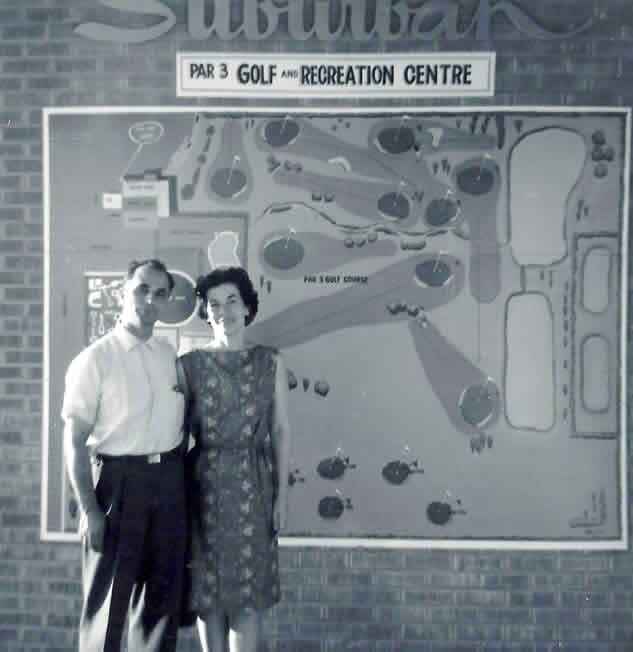
Peter and Lola Pontikes pose in front of the master plan (installed on an exterior wall of the restaurant) for the future development of the Suburban Golf and Recreation Centre (1964)
Source: Pontikes Family Photo
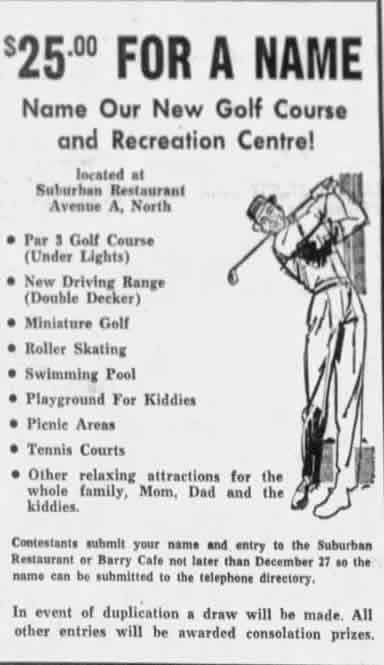
Saskatoon Star-Phoenix, December 15, 1962, p. 4.
In 1963, the Suburban Golf and Recreation Centre opened. It initially consisted of a 24-stall, flood-lit golf driving range and two baseball-pitching machines. Construction had begun on a nine-hole par 3 golf course with grass greens. The golf course opened in August of 1964. A children’s outdoor playground area was added.
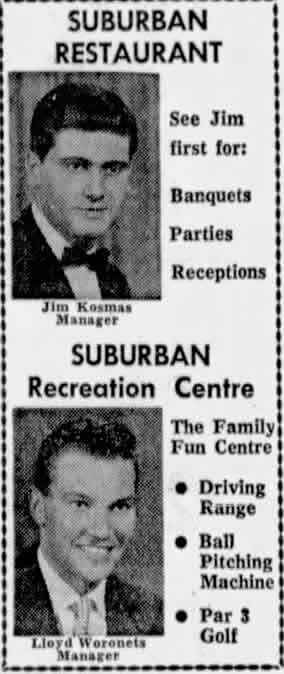
Saskatoon Star-Phoenix, October 19, 1963, p. 7.
While ownership remained with the partners, the recreation centre operated under separate management contracts with people who were not part of the BKP partnership. The centre was promoted both separately and in conjunction with the restaurant. Customers were encouraged to use the recreation centre’s facilities and then have a meal at the restaurant, either inside or through the drive-in. The restaurant’s advertisements emphasized that it provided casual and family-friendly service (even after a game of golf or use of the other recreation facilities) in the coffee shop and more formal meals in the dining room. The restaurant’s motto was: “Come as you are. The Suburban Restaurant welcomes you.”
Saskatoon Star-Phoenix, May 16, 1970, p. 2.
This relationship between the restaurant and the recreation facilities ended in September 1973 when an electrically-initiated fire destroyed the Suburban Restaurant. The Suburban Golf and Recreation Centre continued to operate in subsequent years but now lacked the food service and washroom facilities that the restaurant previously provided.
The impact of the loss of the restaurant became evident when proposals were taken to the rural municipality to redevelop the property. A lease agreement had been entered in 1978 with Jim Keller who had proposed to construct a go-kart and motorcycle track, as well as a bandstand. He was told that without washroom facilities, all activities including the par three golf course, driving range, and baseball-pitching machines, would have to be shut down. A temporary trailer, containing washroom facilities, was rented.
Saskatoon Star-Phoenix, August 25, 1979, p. 30
Saskatoon Star-Phoenix, March 25, 1989, p. 64.
The recreation centre operated for several more years before closing permanently. The properties were put up for sale and sold in 2005.
Researched by Ken Pontikes (July 28, 2024)
Sources: Saskatoon Public Library, Local History Room; Saskatoon Star-Phoenix, various editions.
Tinos Kortes Registered Architect (717 Victoria Avenue)
Owner: Tinos Kortes
Tinos Kortes was a well-known architect in Saskatoon who received his Bachelor of Architecture
degree in 1949 from the University of Manitoba. He initially worked as an architect with Webster &
Gilbert, an architectural firm in Saskatoon. Shortly afterwards, he established his own firm which he
operated until his retirement in 1987. He was a member of the Saskatchewan Association of Architects,
as well as the Royal Architectural Institute of Canada.
Mr. Kortes designed many buildings in Saskatoon. These included educational facilities (Lorne
Haselton Elementary School which is now occupied by the Saskatchewan Abilities Council,
Montgomery Elementary School, Ogle Hall which was formerly St. Pius X Seminary at the University
of Saskatchewan), recreational facilities (Gordie Howe Kinsmen Arena), office buildings
(Saskatchewan Teachers Federation Building, Remai Building), churches (St. David’s Trinity United
Church), restaurants (Jay Dees, The Suburban), and residences.
Researched by Ken Pontikes (October 31, 2023).
Tony’s Popcorn Stand/Tony’s Popcorn Palace
Popcorn Stand: Near Corner of Second Avenue and 21st Street
Popcorn Palace: 337 Second Avenue South
Owner/Operator: Tony Pelehos
Tony Pelehos with his Popcorn Stand, near the corner of Second Avenue South and Twenty-first Street East (ca. 1950)
Source: Saskatoon Public Library, Local History Room (LH-6645-A)
For nearly half a century (from 1927 until the early 1950s), Tony Pelehos made his living by selling popcorn and peanuts in Saskatoon. He initially sold from a two-wheel movable cart which was electrified and was equiped with a “French fry” popcorn-making machine. The sign on his cart said, “Tony’s Here to Please You”.
Tony’s cart was a well-known feature of Saskatoon’s downtown business community. Every day and in all types of weather, he pushed his cart to the corner of Second Avenue South and Twenty-first Street East. He had a “storehouse” for his supplies at the rear of the Gem Cafe. In 1944, he built an all-metal garage for his cart on property he owned at 259 Third Avenue South which significantly shortened the distance he had to push the cart to the location for his daily sales.
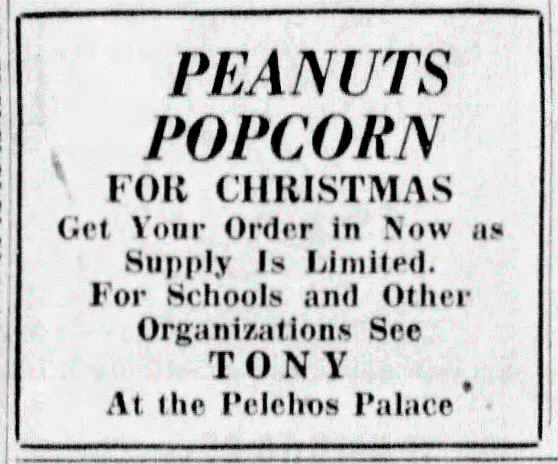
Saskatoon Star-Phoenix, December 7, 1946, p. 8.
In 1948, he replaced his moveable cart (which he sold) with a more permanent structure on two lots he had purchased at 337 Second Avenue South (next to the Davies Electric Building). City Council conditionally approved his plan to relocate an existing frame structure, even though Tony had taken out a $13,000 building permit for construction of a building on the property. Despite being named the Tony Pelehos Palace, some members of City Council considered the relocated structure to be an “eyesore” and expressed concerns that it might have unfavourable insurance implications for adjacent properties (Saskatoon Star-Phoenix, April 9, 1948, p. 3) .
Tony Pelehos in his Tony Pelehos Palace at 337 Second Avenue South (ca. 1950)
Source: Saskatoon Public Library, Local History Room (B-1762)
Tony was a very generous man. Each year, he would donate one day’s receipts from his stand to a charity. The Anti-Tuberculosis League, Saskatoon City Hospital, the Children’s Aid Society, and the Red Cross benefited from this initiative. Each Christmas, he gave gifts to children from low-income families.
Tony’s involvement in the sale of popcorn and peanuts in downtown Saskatoon ended in 1953 when his son, James Pelehos, took over the operation. Tony died in 1955.
In subsequent years, James Pelehos carried on the family tradition by selling caramel apples, cotton candy, and caramel corn from a trailer that traveled the western Canadian summer fair circuit. There is more information about Tony and James under “Family Relationships – Pelehos”.
Written by Ken Pontikes, June 25, 2024.
Sources: Various editions of the Sasktoon Star-Phoenix.
Zenith Bowling Academy
136 Second Avenue North and 157 Third Avenue North
Owner/operator: Sam Serif (1928 – 1932)
In 1928, the Greek-born owner of the Zenith Café (136 Second Avenue North), Sam Serif, converted the second-floor ballroom in his building into a five-pin bowling alley. The Zenith Café continued to operate on the main floor.
Sam was responding to the growing popularity of bowling in Saskatoon as a recreational activity. The public – men and women, young and old – responded enthusiastically to the modern, clean, and well-ventilated facility. According to an article in the Star-Phoenix: “From one of the minor amusements with a hundred or so people playing in one or two leagues to more than eight hundred playing . . . [this reflects] the rapid advancement bowling has made in Saskatoon in the past few years.” (Saskatoon Star-Phoenix, October 18, 1929, p. 22.) The Star-Phoenix suggested that the bowling lanes at the Zenith Café “marked the beginning of a revival of bowling in Saskatoon” (Saskatoon Star-Phoenix, November 7, 1929, p. 11).
Saskatoon Star-Phoenix, October 25, 1928, p. 15
The bowling lanes proved to be popular and Sam decided to expand his operation by building a new bowling facility at the south-west corner of Third Avenue and Twenty-third Street (157 Third Avenue North). The reinforced-concrete building and its interior equipment cost approximately $185,000. The facility consisted of a one-storey structure (110 x 120 feet) with a basement. The 27-lane facility opened in October 1929. Eleven alleys were located on the first floor, with another 16 in the basement. Five hundred spectators could be accommodated in the basement alleys and another 250 on the first floor. Around 75 people were employed in the facility during the winter months.
When it opened, the new facility was the home of 190 teams in fifteen leagues. A “board room” was also included in the building; this room was made available as a meeting space for sports clubs. A thirty-foot lunch counter operated in the basement.
By December 1929, the popularity of bowling in Saskatoon supported two large (the Zenith Bowling Academy and Mike Fingard’s 18-lane Bowladrome in the basement of the Avenue Building) and two smaller bowling establishments, providing a total of 54 lanes. Approximately 50 leagues, accounting for over 400 teams and 2,000 bowlers, participated competitively. Another 2,000 people were recreational bowlers and not affiliated with competitive teams. The focus of the sport shifted from ten-pin to five-pin bowling and consequently, attracted more women and families. In 1929, 60% of bowlers in Saskatoon were women. The Star-Phoenix also reported that “the existing bowling alleys are crowded to capacity and sometimes people are turned away because of a lack of alleys on which to play the game” (Saskatoon Star-Phoenix, December 31, 1929, p. 78).
Despite the rapid growth in bowling’s popularity, Sam Serif faced financial difficulties in operating his Bowling Academy. In the spring of 1932, he was forced to sell the facility. Mike Fingard purchased and renamed the facility as Fingard’s Bowladrome. The operation in the Avenue Building was closed.
Source: Saskatoon Star-Phoenix, September 2, 1933, p. 13.
In 1956, the Fingard family subsequently sold the facility to John Rak. The downtown facility was renamed as Rak’s Bowladrome and continued to operate until 1983 when it was closed.
Researched by Ken Pontikes, December 7, 2023.
Sources: Saskatoon Star Phoenix August 21, 1928, p. 3; October 25, 1928, p. 15; June 21, 1929, p. 11; October 18, 1929, p. 22; November 7, 1929, p. 11; November 5, 1929, p. 15; December 31, 1929, p. 16, 78, and 80; October 19, 1931, p. 10; February 27, 1932, p. 20; August 20, 1932, p. 5; September 2, 1933, p. 13; April 16, 1983, p. 3; and February 12, 1933, p. 3.
